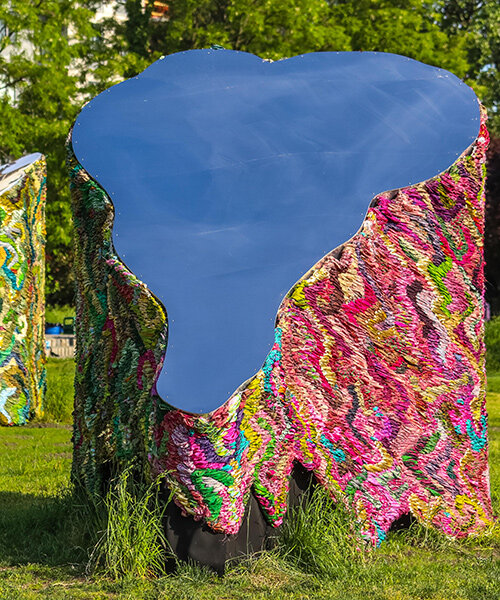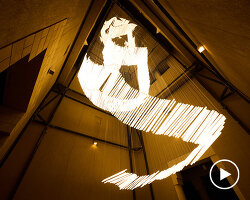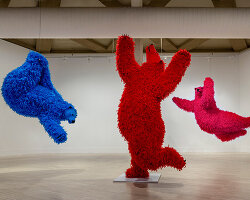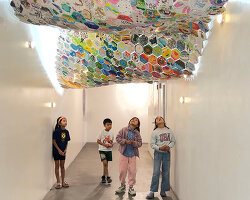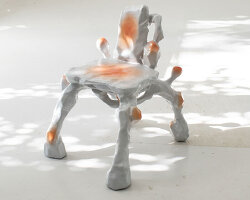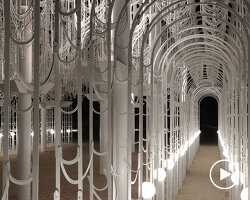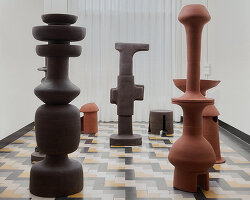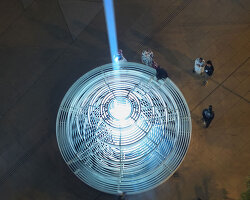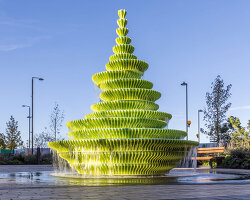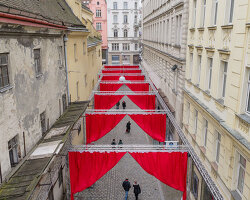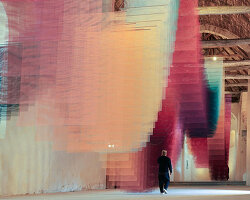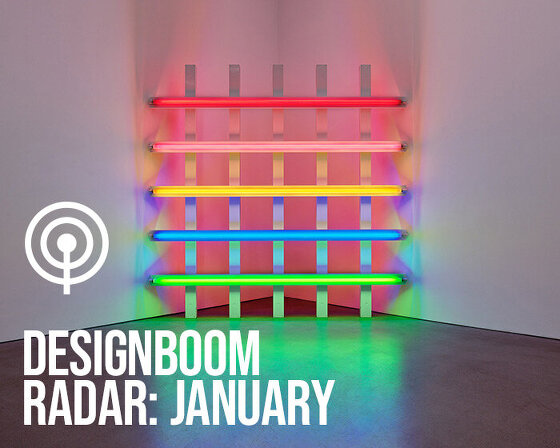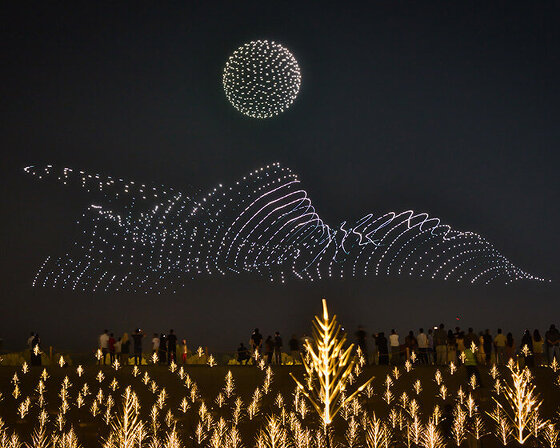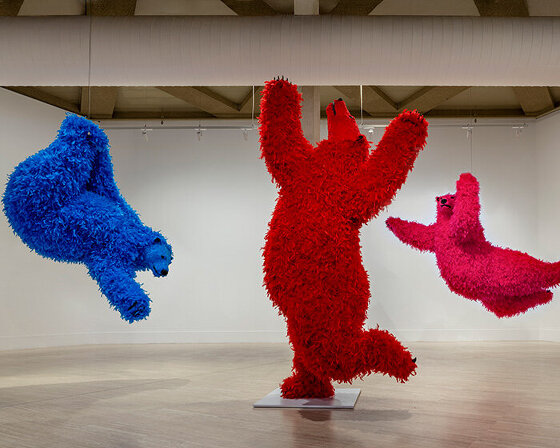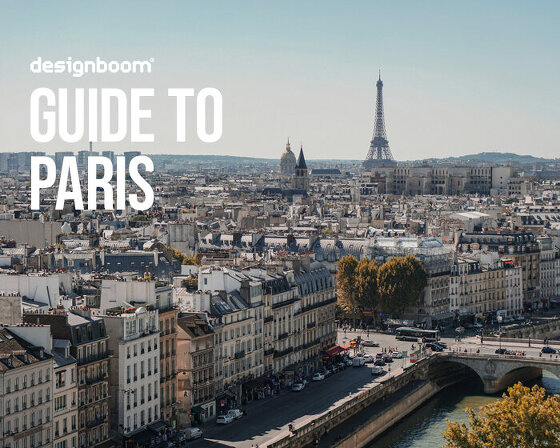weaving myths and memory
Backdropped by the New York City skyline, a collection of vibrant artworks by Suchitra Mattai is scattered across the Socrates Sculpture Park. The exhibition, We Are Nomads, We Are Dreamers, transforms the park into a space of contemplation and an exploration of identity, diaspora, and the reclamation of history. This sculptural installation is part of a busy year for the LA-based artist, represented by Roberts Projects, whose work continues to challenge and reframe the boundaries of art, culture, and memory.
Mattai’s work and practice is deeply personal, rooted in her experiences as a child of Indian parents who emigrated from Guyana. Her family history of indentured servitude, brought by the British from India to work on sugar plantations, is a powerful undercurrent in her work. She draws from this rich, complex history to create pieces that challenge colonial and patriarchal narratives, using materials and techniques passed down from her grandmothers. The result is a body of work that merges the domestic with the mythic, the past with the future, and the personal with the universal. We Are Nomads, We Are Dreamers will be on view at the Socrates Sculpture Park until August 25th, 2025.
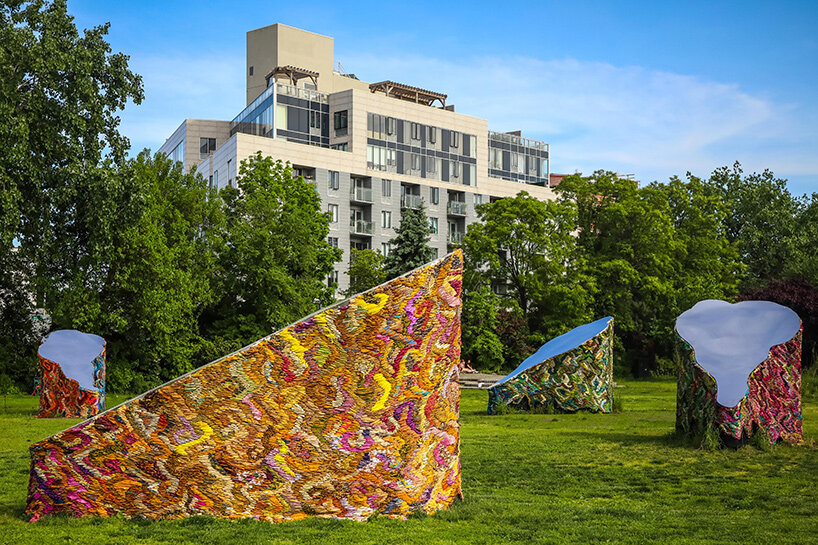
Suchitra Mattai, becoming, 2024. photo by Scott Lynch, courtesy of Socrates Sculpture Park
vibrant textiles wrap sculptural pods
In Socrates Sculpture Park‘s We Are Nomads, We Are Dreamers, Suchitra Mattai interweaves memory, myth, and material culture. The installation features six ‘pods’ made of worn saris and mirrored stainless steel, organic shapes that conjure glacial deposits and embody the artist’s vision of an imagined mythological landscape. These pods are at once sculptures, and artifacts from a future where the diasporic experience is celebrated and reclaimed. The saris, sourced from South Asia and its many diasporas, are woven together to create a tapestry that symbolizes a community rejoined after the scattering forces of colonialism.
The artist‘s process is as much about the transformation of materials as it is about the transformation of narratives. Vintage saris, found needlepoints, and paintings are reimagined into new forms, layered with beading and embroidery to add complexity and depth. These craft-based practices, traditionally associated with the domestic sphere, are elevated in Mattai’s work, collapsing the divisions between high and low art. The transformation of these materials serves as a metaphor for reclaiming and rewriting history, where the labor of women is not only recognized but celebrated.
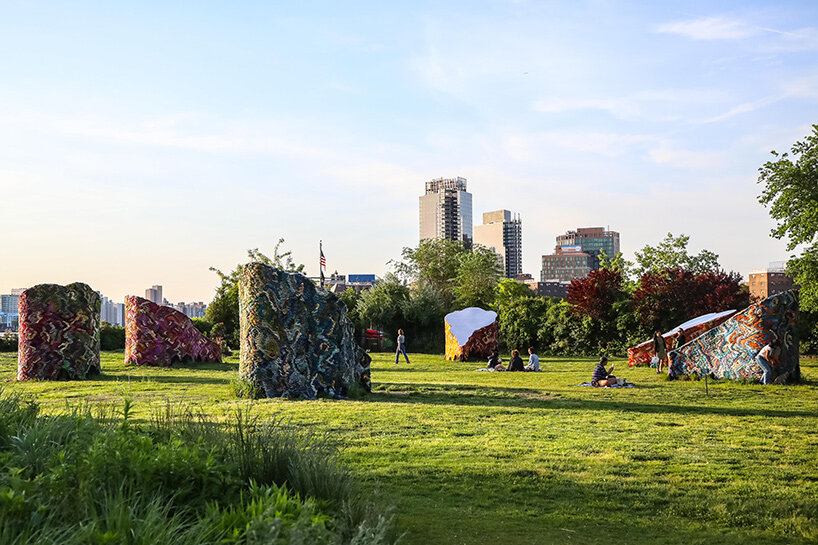
Suchitra Mattai, becoming, 2024. photo by Scott Lynch, courtesy of Socrates Sculpture Park
dialogue with suchitra mattai
DB: We Are Nomads, We Are Dreamers at Socrates Sculpture Park is said to interweave memory, myth, and material culture. Can you share how your personal history and the diasporic experience influenced the themes of this exhibition?
Suchitra Mattai (SM): In my practice, I aim to give voice to those whose stories haven’t been heard. The Park’s proximity to the East River as a tributary of the Atlantic Ocean, a site of countless migrations, and its location in Queens, which has been home to so many immigrants played major roles in the conception of the project. My own family’s history of indentured servitude in Guyana, brought by the British from India to work on sugar plantations, feeds my desire to memorialize their lives, strength and perseverance.
Six ‘pods’ made of worn saris and mirrored stainless steel comprise the installation. These organic shapes conjure glacial deposits that I experienced growing up in Nova Scotia. They are artifacts from the future that comprise an imagined mythological landscape. ‘Weaving’ thousands of recycled saris together from South Asia and its many diasporas, I seek to rejoin a community that has been scattered through colonialization and otherwise.
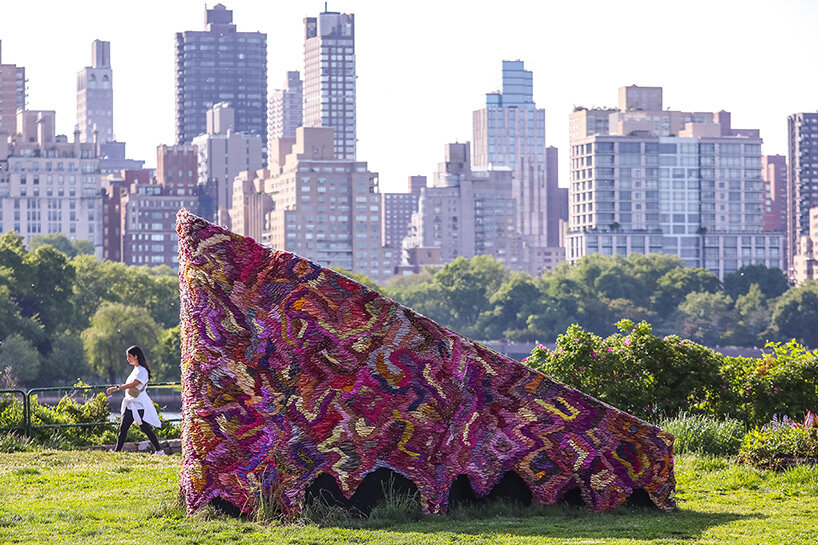
Suchitra Mattai, becoming, 2024. photo by Scott Lynch, courtesy of Socrates Sculpture Park
DB: Your work often integrates vintage saris and found materials, which you reimagine into new forms. What does the process of transforming these materials mean to you, and how do you see this as a way of reclaiming or rewriting history?
SM: Materials hold their own histories, connotations, and auras. By using the saris to ‘paint’ and ‘sculpt,’ these recycled materials transform into something new, but they still carry the smells, patterns and histories of the women who wore them. The transformation adds new layers and complexity to the original stories. It is a very disorienting experience to be an immigrant, so taking materials from my own experience and connecting them to the ‘homeland’ is a way for me to feel grounded. I grew up wearing saris (for special occasions) and to be able to weave connections to my past through the very clothes worn by South Asian women, unites me to my ancestral past and asserts these women’s presence and significance in the world.
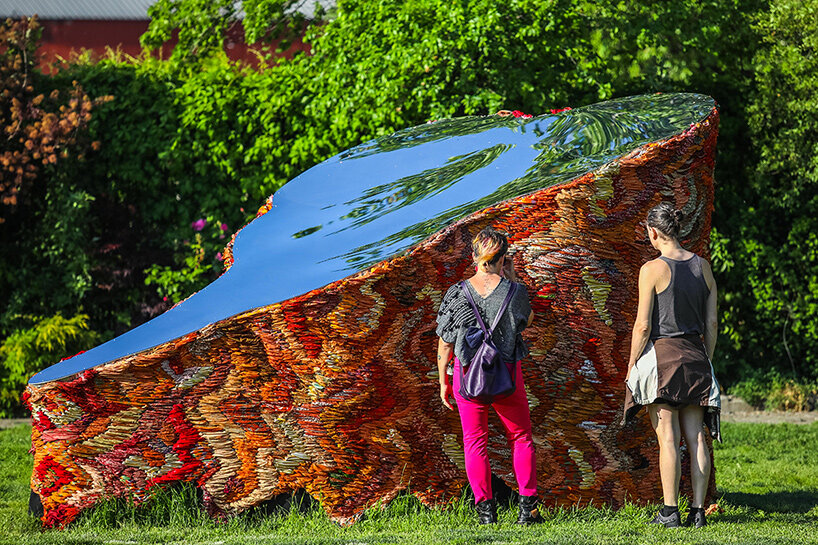
Suchitra Mattai, becoming, 2024. photo by Scott Lynch, courtesy of Socrates Sculpture Park
DB: In your work, there’s a significant emphasis on the labor of women, particularly in craft-based practices. How do these domestic, craft-based processes connect to your broader commentary on colonial and patriarchal structures?
SM: I am interested in celebrating the labor of women. Using craft-based processes which were once relegated to the domestic sphere defies categorical boundaries and inserts the lives of women into a patriarchal system.
DB: The heroines in your pieces are described as empowered, mythic, yet empathetic. Can you discuss the role of these figures in your work, and how they represent the possibilities of a ‘wondrous future space’?
SM: This utopian future space is one full of abundance and empathy. My female characters are often embroidered, sewn and woven from pre-existing tapestries. I rework the narratives in those tapestries, which often depict members of the aristocracy, to include brown women. In other examples, I harness the strength of pre-existing mythological figures and goddesses, both Eastern and Western, in the service of providing space and voice for brown women.
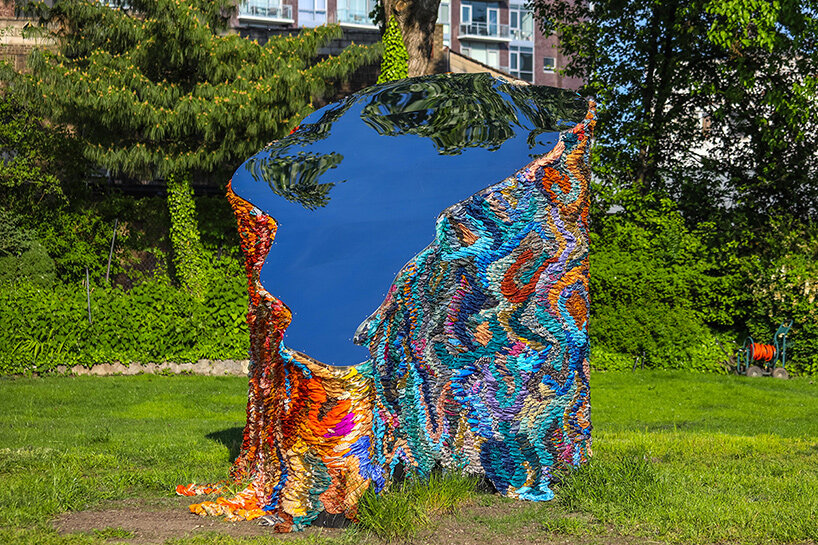
Suchitra Mattai, becoming, 2024. photo by Scott Lynch, courtesy of Socrates Sculpture Park
DB: We Are Nomads, We Are Dreamers is part of a prolific year for you, with multiple solo and group exhibitions. How do you approach the challenge of maintaining a cohesive narrative across these varied platforms?
SM: I trust in my intuition. I want to make work that is honest but also poetic. I am interested in expanding what we in the Western art world consider to be ‘cohesive.’ The best art, poetry, art and music is expansive and defies conventions. There is an overarching conceptual framework but within that space I want to allow for the freedom of experimentation. Work that teeters on the boundaries of the known and unknown is what I am after.
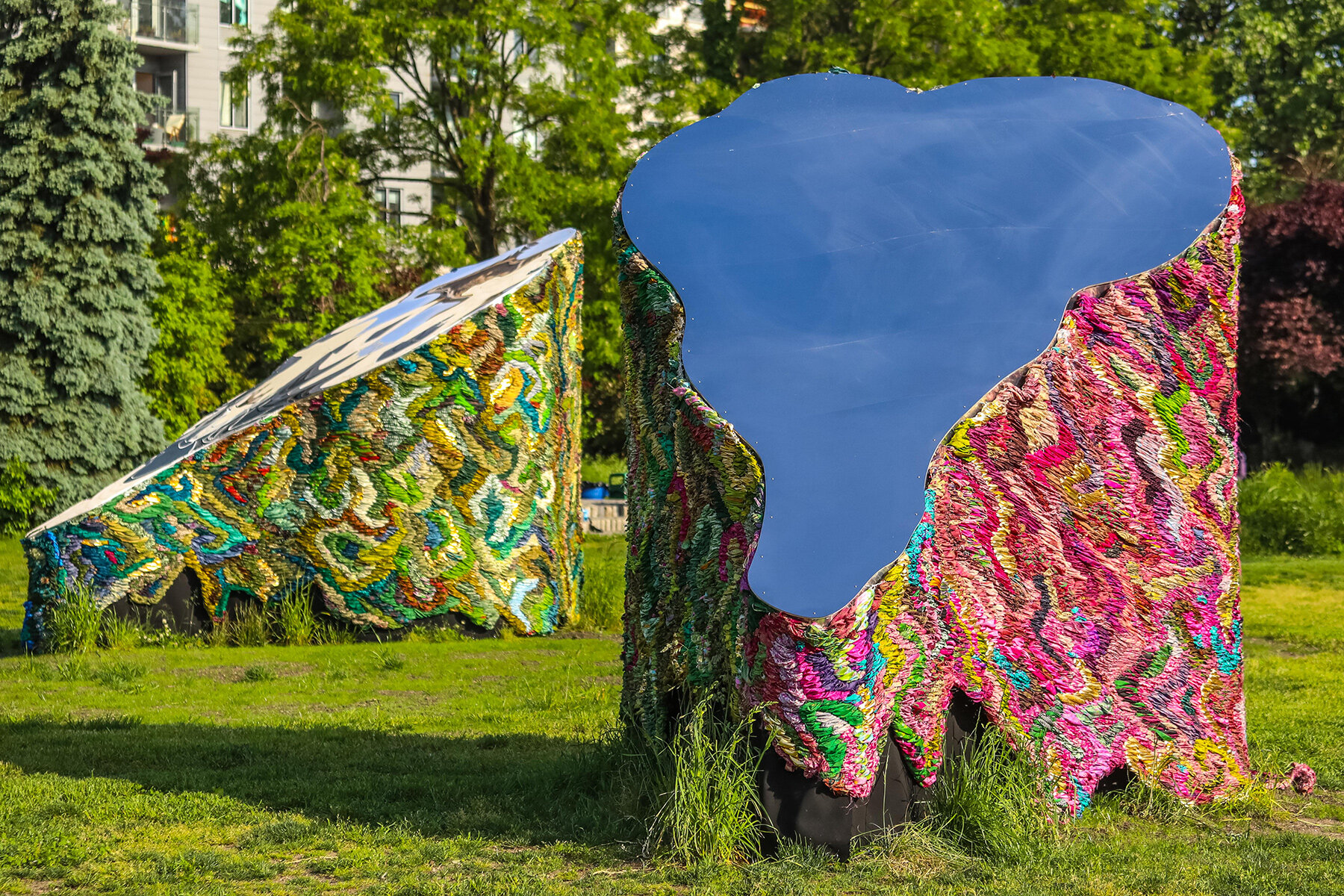
Suchitra Mattai, becoming, 2024. photo by Scott Lynch, courtesy of Socrates Sculpture Park
DB: Your upcoming exhibition at the National Museum of Women in the Arts, ‘Suchitra Mattai: Myth from Matter,’ seems to continue your exploration of myth and memory. Can you give us a preview of what to expect from this show and how it builds on your previous work?
SM: This is a special exhibition and a first for me. When I was asked to do this show, I thought about how special it would be to borrow works from the various museums in DC. With the incredible support from the National Museum of Women and the Arts curators and staff, my exhibition will put works from the National Gallery of Art, the Hirshhorn, the National Museum of Asian Art, and the Smithsonian American Art Museum in conversation with my work. I am interested in recontextualizing these objects, erasing the boundaries that separate these collections and forming connections with my work.
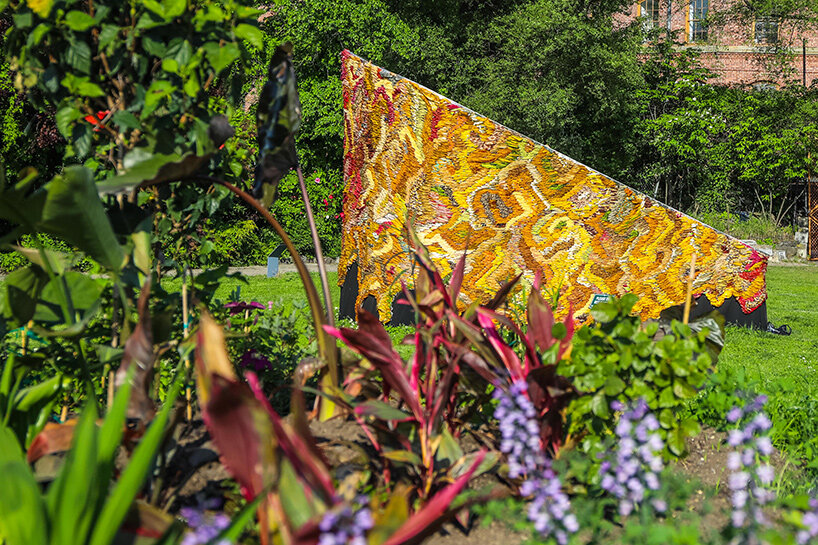
Suchitra Mattai, a nomadic garden and becoming, 2024. photo by Scott Lynch, courtesy of Socrates Sculpture Park
DB: You often transform found needlepoints and paintings by beading into them. Can you describe a specific work where this technique allowed you to subvert the historical narrative it depicts?
SM: Yes, in ‘In the absence of power. In the presence of love,’ beading and embroidery are used to conceal, reveal, subvert the old myth for a new one. The original Greco-Roman scene with goddesses and cherubs is rewritten to reveal a central ‘blue’ child. A contemporary ‘heroine’ and several spirit figures are in awe of the child. The child is depicted in blue like many Hindu deities but also has western religious undertones. I have shifted the narrative to tell a tale of motherhood, ancestry and the role of religion in my own family.
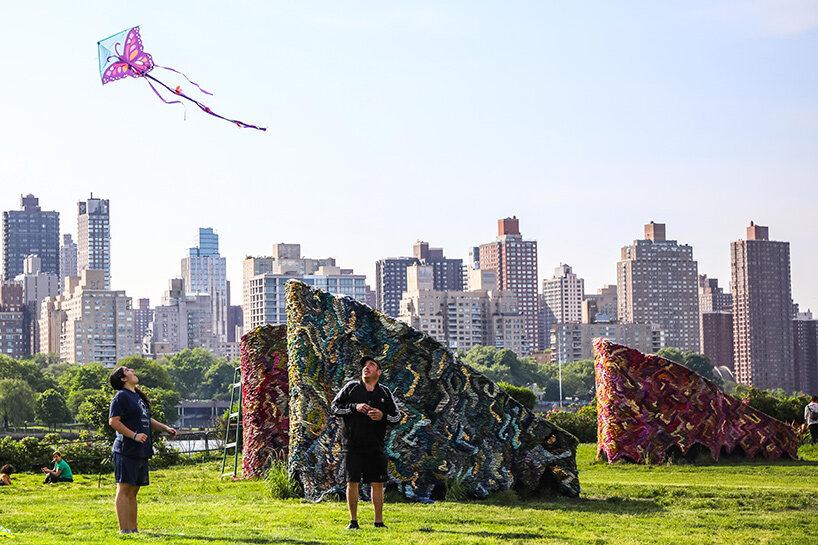
Suchitra Mattai, becoming, 2024. photo by Scott Lynch, courtesy of Socrates Sculpture Park
DB: As someone who blurs the lines between high and low art, how do you navigate the art world’s expectations, and what has been the response to your work’s unconventional materials and methods?
SM: I have come to this art practice later in life, and middle-aged women aren’t known to pay attention to what people think! That being said, my work has been met with support, connection and positivity by many people and I am so very grateful for this.
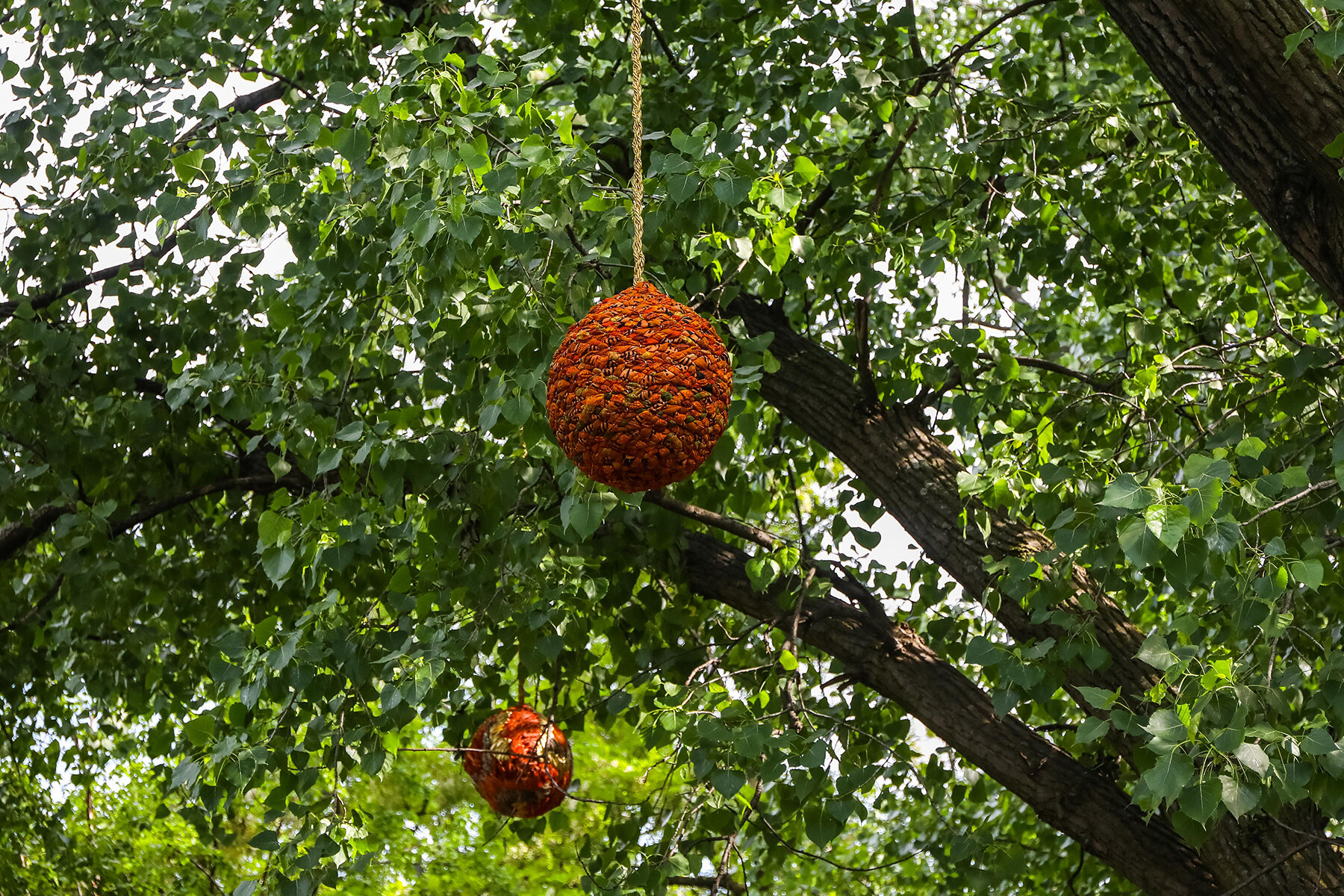
Suchitra Mattai, phala, 2024. photo by Scott Lynch, courtesy of Socrates Sculpture Park
DB: You’re currently featured in more than ten group exhibitions, each with its unique context and audience. How does participating in group shows differ from your solo exhibitions in terms of creative expression and audience engagement?
SM: Group exhibitions allow for new contexts, connections and audiences. I love seeing the connections between other artists’ work and my own and how different curators contextualize my work. Sometimes, they also offer a way to learn of artists that I don’t know about. Solo exhibitions are risky and scary in many ways. You are wearing your heart and thoughts on your sleeve and your focus is inwards. Group exhibitions offer opportunities to focus outwards and to see the kinds of visual and conceptual relationships you share with other artists.
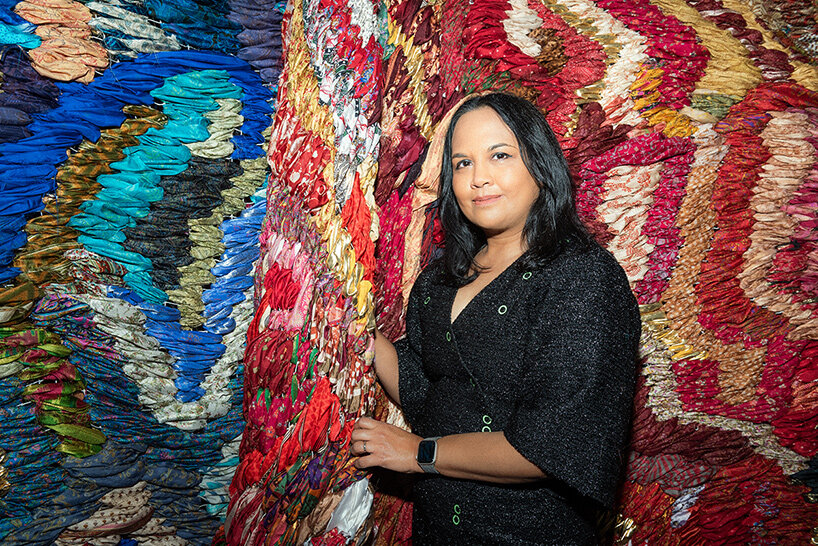
Suchitra Mattai. image by Anna Maria Zunino Noellert, courtesy of Socrates Sculpture Park
DB: Looking ahead, what themes or ideas are you excited to explore in your upcoming works, especially as you navigate the intersections of identity, memory, and myth?
SM: If myth and folklore hold a society’s hopes, fears, and dreams, then we need a new inclusive mythology that combines the best of the past with the best of an imagined future. I am excited to continue to research and deconstruct mythology and folklore from different cultural contexts and to really get at this new cast of characters and the landscape that they will occupy.
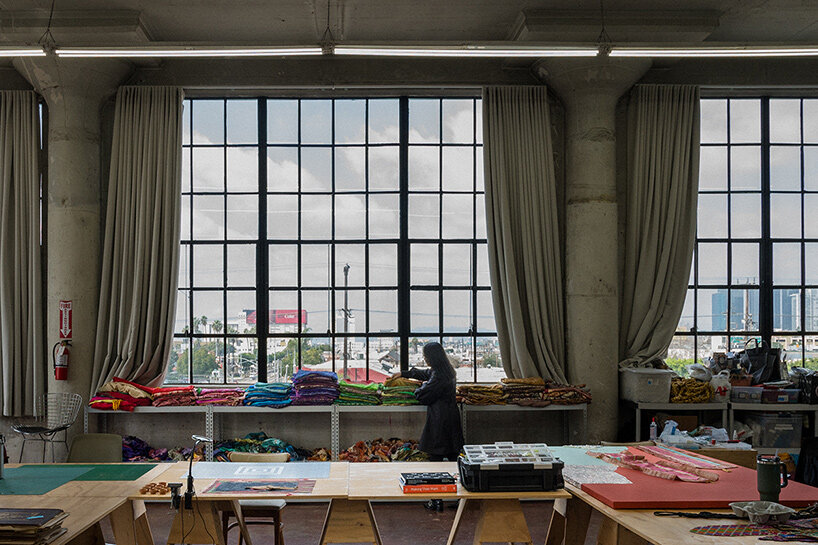
Suchitra Mattai. image by Anna Maria Zunino Noellert, courtesy of Socrates Sculpture Park
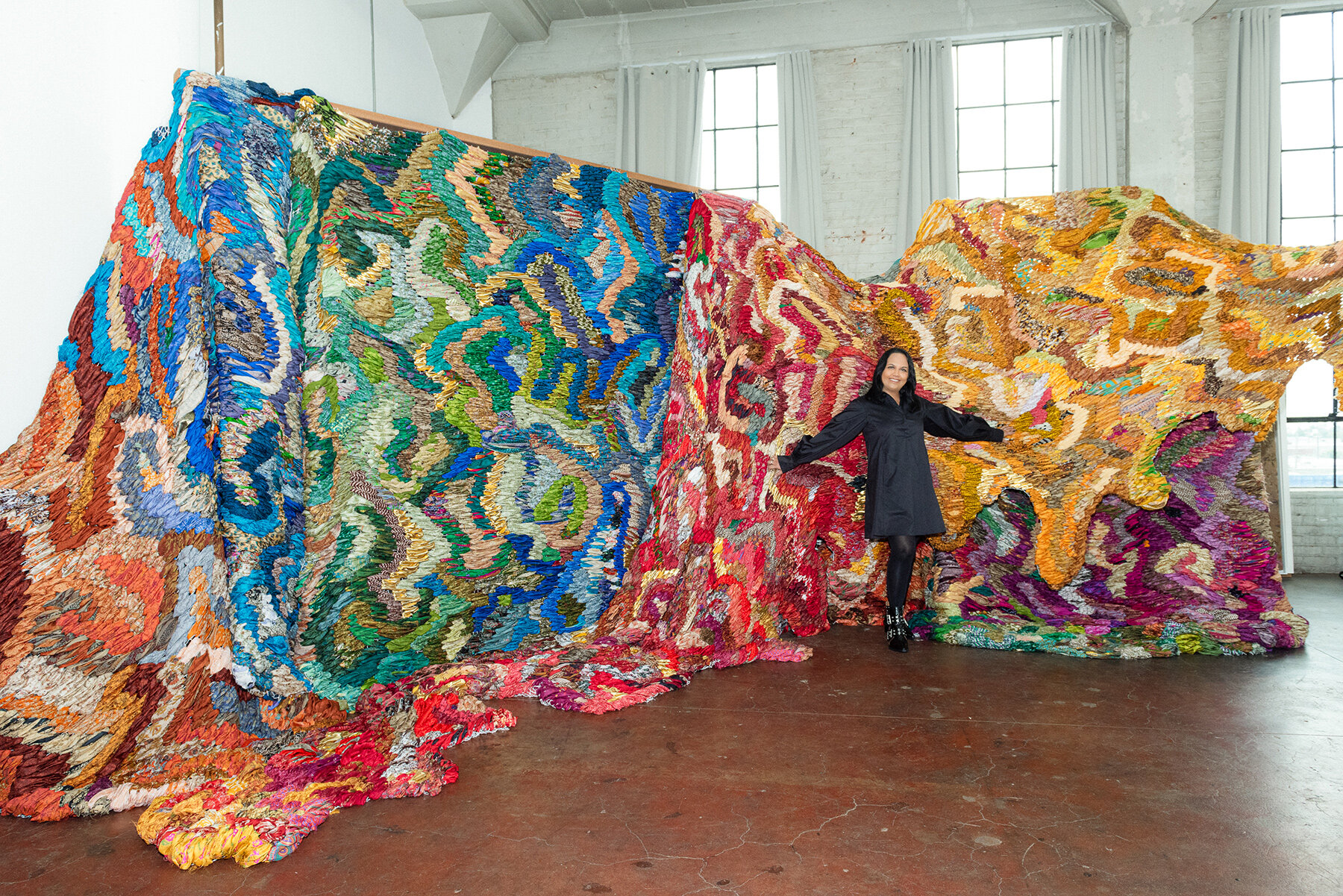
Suchitra Mattai. image by Anna Maria Zunino Noellert, courtesy of Socrates Sculpture Park
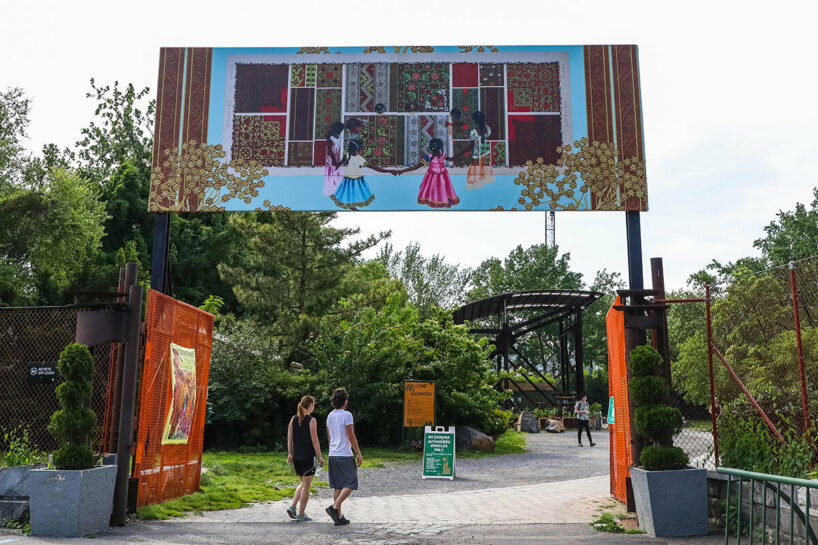
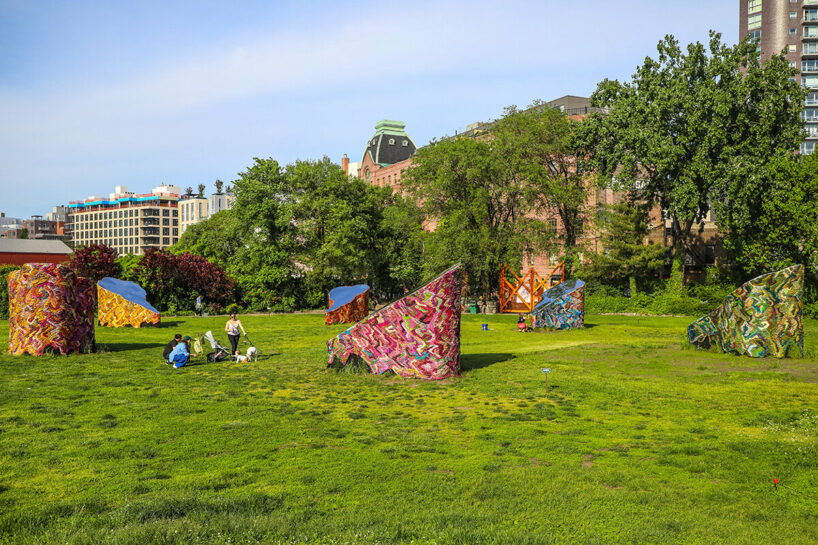
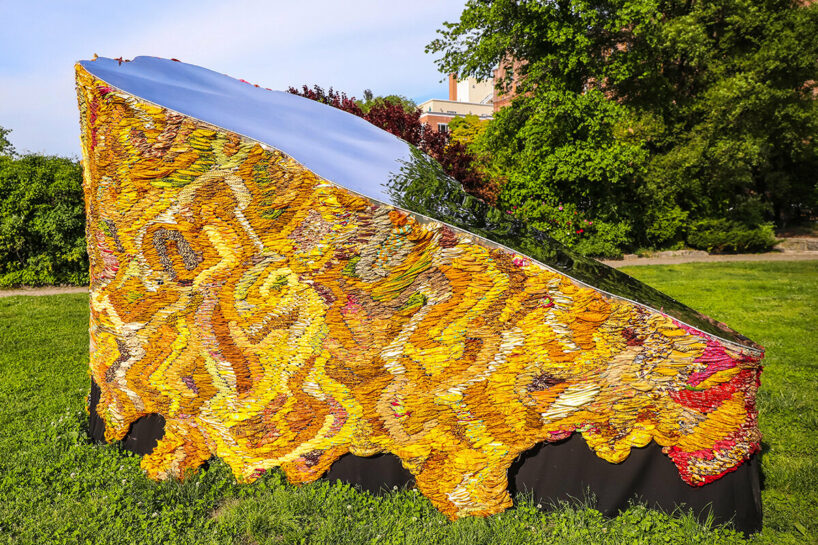
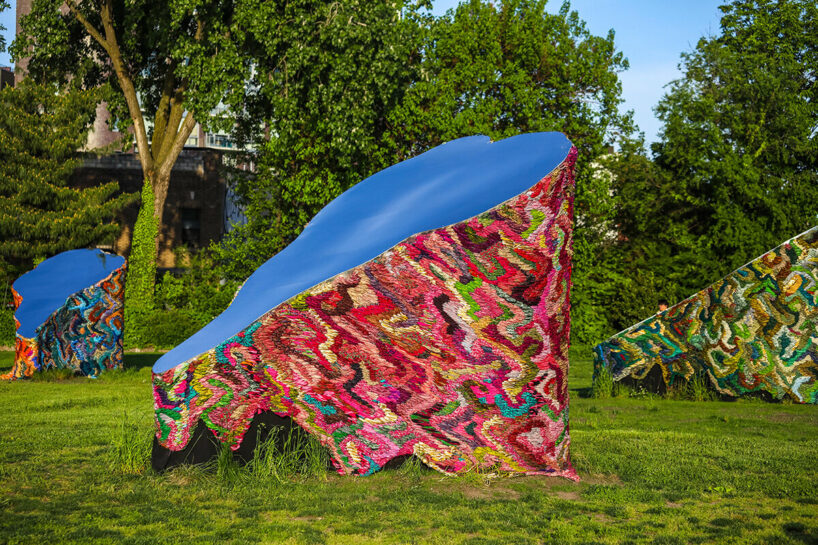
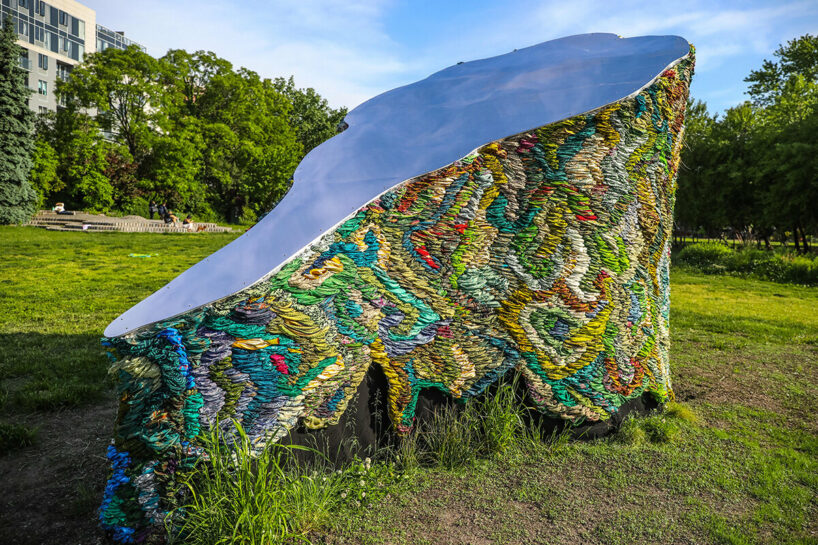
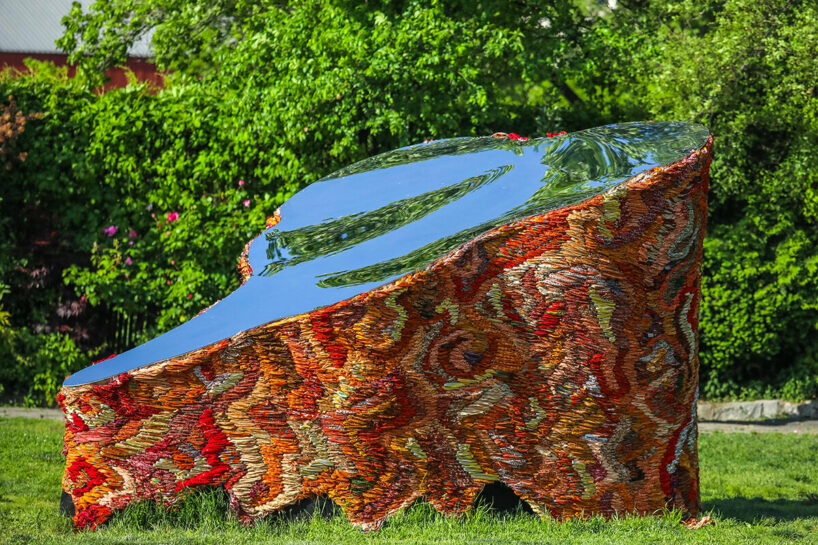
project info:
exhibition title: We Are Nomads, We Are Dreamers
artist: Suchitra Mattai | @suchitramattaistudio
location: Socrates Sculpture Park | @socratespark
curator: Kaitlin Garcia-Maestas
on view: May 11th — August 25th, 2024
photography: © Scott Lynch, Anna Maria Zunino Noellert
